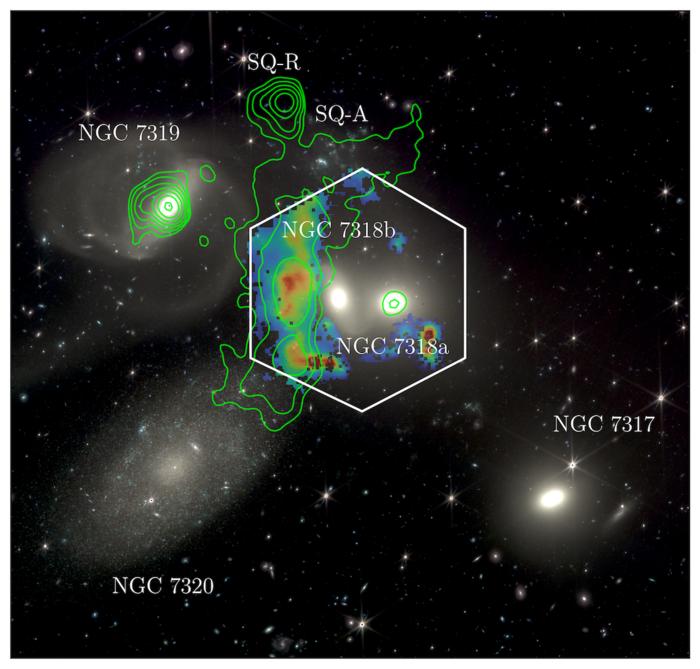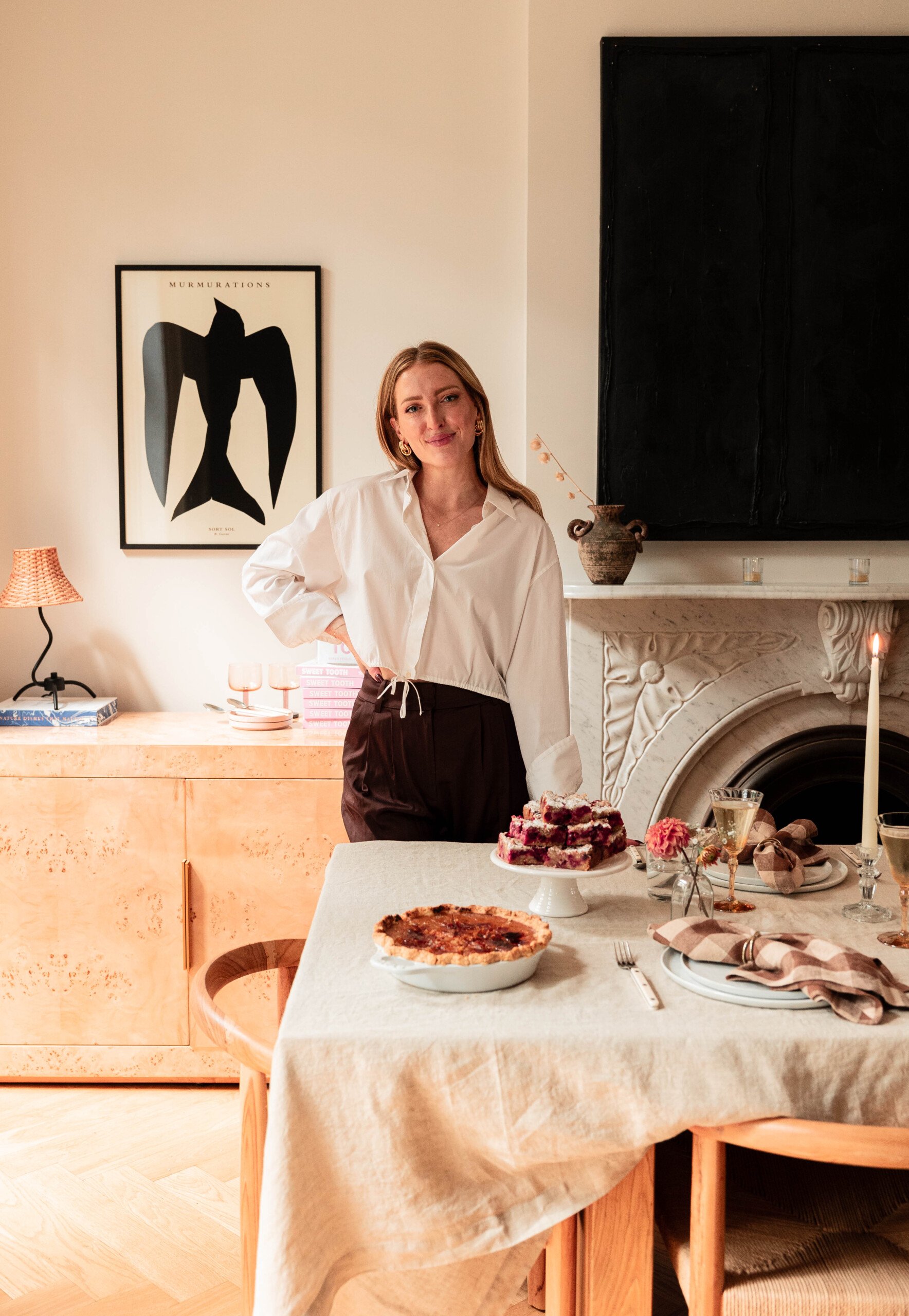An Archivist for the End of the World
An excerpt from Landscapes by Christine Lai
September 1
I picture myself standing in the midst of a ruin. All around me there are mildewed canvases, rolled up crudely or crammed into drawers. The edges of the papers, mouse-eaten or worm-eaten, fall into heaps of dust.
As I work through the disorderly archive and chip away at the mountain of responsibilities, my mind is drawn back to this image of Turner’s studio, left in a state of Pompeii-like destruction after the painter’s death. That same atmosphere of decay permeates the Library in which I spend my mornings. On better days, disorder is forestalled, and there is only the linearity of the catalogue and the neat collection of books and objects. On days of anxiety, such as today, I find myself stranded in the wreckage. The dust that has gathered in the corners, the moldy papers, the shelves that bend under the weight of books and archival boxes, all these seem to be advancing toward me, millimeter by millimeter, until they overwhelm me.
September 2
A calmer start to the day. A thin column of sunlight shines down from above. Elsewhere, the Library’s underground storage space is illumined by a solar-powered lamp that is recharged daily on the desiccated lawn. I write by the light of this lamp and a pile of books serves as my desk.
Before I sat down to write, I spent some time admiring the flowers I keep in secret. The earthquake five years ago resulted in an irreparable crack down one wall of the Library. But plants have forced their way through the fissure and have begun to sprout in the space where books were once stored. Even now, as aridness eats through the outside world, the weeds and flowers that have flourished in the aftermath of disaster are protected by the shadows and nourished by the water from the broken pipe. I have not told anyone about this pipe, not even Aidan, as it would be fixed immediately, depriving the flowers of their sole source of water. This spot of green is the only place where I allow water to drip away unchecked; these flowers the only luxury I permit myself to keep in these days of want and longing.
It has been almost three years since it rained in this part of England. First came the floods, then came the droughts. Here at Mornington Hall, the one-thousand-acre parkland is parched, and the remaining leaves crumble between my fingers. Parts of the earth lie fractured, creating intricate webbing that spreads out like dark veins. I never thought I’d miss the cold, wet air on rainy days. We now count in milliliters, careful not to exceed the amount of water the government has allotted to the house. The small bottles Aidan and I pass between us are not merely tools of survival, but also mementoes of a past that recedes further and further with each passing month.
A nature diary composed over the past decade would read like a catalogue of losses. There was a time when catastrophe seemed far away. We glided through the seasons confident that each calendar year would yield the same degree of heat and cold, the same blossoms and migrating birds. Then change became visible. In aerial photographs, the earth, cracked, burnt, and striated by the lines of industry, resembled a painting, and some saw beauty. Nothing is certain, they continued to say. We’ll see, we’ll see. We have seen, yet the debates have intensified and some persist in believing the sky to be unchanging, the only immutable thing in a world of fluid truths.
Yesterday, I agonized over what to do with the boxes of newspapers I had collected at one point, news articles that detailed the progressive deterioration of the world we knew. I felt obliged, as an archivist, to keep a physical copy of everything, as though the collecting and preserving of these words could somehow stave off disaster. But a few months ago, during yet another heat wave that killed human and non-human animals alike, I stopped collecting the news. For the first time, archiving seemed futile. The heat encased us like a cocoon and we re-emerged into the melting world with fewer illusions about the future.
This morning, after confirming that the cedar tree I have loved for so long is indeed beyond saving, I started using the archived newspapers for packaging.
September 3
I left my childhood home and came here to Mornington Hall twenty-two years ago, at the start of my research fellowship. But now, in less than a year, this house, too, will be gone. The Long Gallery with its view of the park; the Conservatory with its surviving plants; the Library with its white columns—all these are to be demolished in about seven months.
Mornington, in its old age, has endured countless cycles of change and reinvention. It was once an aristocratic estate, a school, a hospital, and for a period of time after the Second World War, a cow shed and pigeon coop. When Aidan’s family purchased the estate decades ago, they restored it to its former self as a symbol of long-lost refinement.
We have now entered another phase of disrepair. The house has been falling apart for years. Rainstorms have inundated rooms; heat has dried and cracked the paint and plaster. Some days, Mornington seems uncommonly fragile. Pipes burst, windows break, and parts of the façade peel away in the wind. Since I first moved in with Aidan, we have attempted to avert decay by daily care, by the physical work of cleaning and mending, saving the house one piece at a time, and accommodating as many travelers as possible in the rooms that remain intact.
People once spoke of Ruinenlust, of the picturesque and melancholy beauty of abandoned buildings. On one occasion, Aidan joked that Mornington resembles the Villa Savoye, which had fallen into a state of complete dilapidation, filled with the stench of urine and excrement, its white walls smeared with graffiti. Even in that soiled state, Villa Savoye was still considered beautiful by some. But here, we know only the exhaustion of having to keep the house from collapsing.
The structural damage caused by the earthquake compromised much of the underground storage system in the Library. The robotic arms are broken, and we have to climb down a ladder to access the lower storage level. The flood from the burst pipes also damaged the collection. We have sold most of the valuable pieces to finance the repairs, including Turner’s A View on the Seine, once the gem of the house. Some artworks have gone to the national archives and museums; others to private collectors.
The items that remain in the Library do not have high market value: the books and objects that have sustained significant damage from the flood, and the ephemera I added during my time here. Before Mornington is dismantled, most of these artifacts must be reorganized and re-catalogued for potential online sale. Some items will be discarded. Others we might add to our own collection, which we will take with us when we leave in the spring. I also wish to keep a record of the objects that I find evocative, with a description of their physical states as they exist now, in my hands. This, then, has been my main task since early August: the building of an archive of remains.
Also in seven months: Julian’s scheduled return to Mornington, to visit the house one last time. And I will see, for the first time in twenty-two years, the man who forced himself upon me in the unbearable summer heat. I still remember the cries of the nightjar that evening, and the agitated glimmer of the lamp that arced over the painting of death hanging on the wall.
Photographs
Twelve black-and-white photographs, measuring 27 x 35 cm, depicting Mornington Hall, ca. 1920. Unbound, held in brown archival box. Photographer unknown. Toning and wear along the edges. Imperfections due to moisture.
September 12
The house in the photographs both is and is not the house I know. The first photo in the series shows the front façade. At the start of my fellowship, I first beheld this view in person: the pale stone, the central dome, and the long path lined with stretches of uncut grass. I remember how a breeze moved through the grass as I walked by, so that the undulating fields resembled a green sea bearing the barge that was Mornington.
The next photo shows the main entrance, flanked by Corinthian columns, with a marble frieze and intricate stone garlands above. When I reached the front door that first day, I found it wide open. My eyes scanned the colors in the vestibule—the black-and-white marble of the floor; the bronze of the sweeping staircase; and the pale-green panels on the walls. The house was silent and pristine, as if it had never known human habitation. An administrative assistant came out to greet me and led me to the Round Gallery, where I was asked to wait. She told me that the quiet was to be enjoyed while it lasted, because the renovations were to begin in a few days’ time. A new glasshouse was to be erected in the garden, and many rooms to be modernized, at the behest of the new owner, Julian.
Next in the box is a photo of the Round Gallery, an octagonal space topped with a dome and sky-lit through a glass oculus. Inside the semi-circular apses were marble statues of Roman gods; on the walls were some of the best paintings in the house.
On that first day, I tried to take a closer look at the Constable, but it was hung rather high up. As I stood on tiptoes to examine the landscape of a rural scene, a gust of wind blew in through the open front door, bringing with it a spiral of loose sheets of paper that spun around the gallery before the gust died down and the sheets settled on the floor. That was when I first met Aidan. He ran in after the papers with a stack of sheets in his hands. I still remember the warmth of his extended hand, which I held lightly in mine.
I wanted to welcome you when you arrived, he said, but I lost track of time. This place is temporarily in my charge.
He picked up the papers, covered with architectural sketches, and led me into the Hall, which was modeled on the atrium of a Roman villa. There were twenty fluted alabaster columns, with Corinthian capitals, standing on the patterned marble floor. A skylight lit the space from above. Gilded plaster ornaments filled the voids between antique statues and urns.
I know it’s a lot to take in at first, Aidan said. But these great houses are never what they seem. You see the faded silk wallpaper? I’ve been told to get rid of that. I also need to replace that tapestry. The moths got to it.
In the nineteenth century, I later read, Mornington Hall was famed for its seamless transition from interior to exterior, so that the man-made and the natural were interlaced in complete harmony. Large doors and windows opened onto the veranda lined with plants, beyond which were the flower beds and the velvety lawns, all replicated in the mirrors of the Long Gallery. Wallpaper was covered with trellises of roses, and ceilings painted with clouds and stars. The first owner, who had commissioned the building of the house to showcase his sugar wealth, held parties regularly. One party, mimicking a famous fête hosted at Carlton House by the spendthrift Prince Regent, featured an actual stream that coursed through the Dining Hall, stocked with goldfish and lined with real banks of moss and grass.
I sometimes wonder what Turner, the son of a barber, felt when he first stepped into Mornington. I wonder if he felt the same sense of unease that I, the daughter of a gardener, felt—still feel—when I came to this seat of opulence, the opulence that would not have allowed room for someone like me. I find greater comfort in the house’s current state of dereliction. It seems more honest, more aligned with the rest of the world.
September 15
Tonight, a simple dinner of vegetable soup and roasted potatoes. Aidan has just returned from a work trip, to survey a potential construction site. We decided to use candles at dinner, for the ambience, and the candlelight created haloes around the faces gathered at the table so that, for a brief while, we resembled the subjects of a painting. Aidan had on blue denim this evening, with the orange sweater that I knitted for him three years ago. The colors recall a Poussin painting, even though I don’t think he ever captured a scene by candlelight.
When I first stood before Poussin’s The Abduction of the Sabine Women, I was seduced by the intense colors. The ultramarine appeared to exert a physical force that leapt out of the frame and into the space of the gallery so that I was pinned to the spot, unable to move or avert my gaze. I was so transfixed by that blue that I nearly overlooked the violent nature of the subject.
The painting, completed in 1633–34, originally belonged to the French ambassador to Rome; then it passed to Cardinal Richelieu in Paris, where it stayed in several palatial residences before it was sold to a collector in Rotterdam. In the late eighteenth century it arrived in England, where it was housed for over a hundred years at the magnificent Stourhead. A few decades at Doughty House, in Richmond, followed, before the painting entered a museum collection in New York.
I try to imagine what the residents and visitors at Stourhead or Doughty—grand estates like Mornington—would have thought of The Abduction of the Sabine Women. I picture a party at Stourhead in the late nineteenth century, in the heyday of the English country house. All the elegantly dressed guests, wine glasses in hand, are scattered around the drawing room furnished with Chippendale cabinets and lined with Persian rugs. Outside the curtained windows: the sculpted gardens and the Wiltshire Downs beyond.
The male guests have returned from a hunt, the female guests from a walk in the gardens. The butler enters with drinks and hors d’oeuvres on a silver platter. The men discuss banking and the state of their companies in distant lands. They discuss art, for they are all collectors. Someone gestures to the Poussin, and the owner, proud of the acquisition, shares the details of the auction and the moments of anxiety when the painting was nearly lost to the other bidder, followed by the eventual relief and triumph.
The female guests join in the collective admiration of the masterpiece illumined by the chandelier. They comment on the composition, on Poussin’s expert rendering of ancient architecture.
Only one person turns away from the painting, an older woman, the sister of the owner of the estate, who is herself a collector and has written a few essays on art. She stands at the window and her gaze is drawn to the scenery outside, scarcely visible in the waning twilight.
A gong sounds. The butler announces that dinner is served. The group proceeds to the dining room. But the woman remains standing at the window. She looks at the Poussin through its reflection in the glass, its colors slightly dulled. As she studies the image of the abducted Sabine women superimposed on the layered landscape outside—on the woods emptied of a few more living beings after each hunt, on the remnants of the unsightly thickets that were burned, on the folly that was torn down after she herself, barely fifteen, was assaulted in its stony interior—as she contemplates all this, she understands, not for the first time, the true cost of all this beauty.
As she contemplates all this, she understands, not for the first time, the true cost of all this beauty.
Object
Claude glass, ca. 1800, small convex mirror, with dark tinted glass. Approximately ten cm in diameter. Circular bronze case, covered with leather; interior lined with silk. Cover scratched; mirror bears mark of mended fracture. Named for the French painter Claude Lorrain. Used by artists and landscape viewers to reflect the view or make tonal adjustments for painting.
September 21
Last week, while the solar panels were being repaired, a toolbox was accidentally dropped onto the central dome of the Round Gallery. The stained glass shattered. Thankfully no one was in the vicinity when it happened, but I cut my fingers as I helped clean up the multicolored glass fragments scattered across the floor.
I can’t believe this happened, Aidan said. They should have been more cautious. No, it was my fault. I should have supervised more closely.
It’ll be okay—I say this to him often.
That beautiful stained glass, he said in a low voice.
I know. But we can’t fix that.
Over the years, pieces of the house have slipped away from our hands, one by one, and loss has become commonplace. When we first began selling off the artworks in the Round Gallery, I grieved for the paintings. They left gaps on the walls, patches of brilliant color that contrasted with the ashen parts faded by sunlight. Each time I experience a sense of loss, I tell myself that none of this was mine to begin with, and none of it was as important as it seemed.
We cleared the broken glass, then Aidan, with the help of two of the men who have been staying with us, blocked off the Round Gallery using wooden planks taken from the empty bedrooms on the upper levels.
The money from the sale of the last batch of paintings has given us funds for repairs and a new backup generator. In order to conserve energy and better insulate the areas that are frequently used, Aidan and his colleagues from the architectural firm constructed plexiglass partitions to separate the living quarters from the disused rooms.
But at times, I still like to venture into those blocked-off areas, in spite of the cold. I’m particularly fond of the room at the top of the three-story southeast pavilion that extends outward from the front of the house. The roof of the pavilion collapsed years ago, during a season of storms. Initially, we panicked. But Aidan grew fond of that wound in the ceiling; he said it reminded him of the oculus at the Pantheon.
We adapted to the new space, just as the room itself adapted to the opening in the roof, taking in all the elements of the outside world. Birdsong, when it still existed, entered through the opening. Dust entered, and sometimes the smell of distant smoke could also be detected. Vines grew, puddles formed, and dead leaves carpeted the floor. When it rained, a column of water would materialize in the middle of the room.
The rain left dark streaks down the whole length of the walls and exposed the wormlike pipes. The colors of the walls changed, year by year. The blue faded into mottled green, and the green gradually became yellow. Dampness also created pockets of air bubbles in the damaged wallpaper.
Sometimes, when the sun shines directly into the room, a column of light appears. I like to set up a desk in this column, so that the sunlight envelops me. It is here, in the middle of this interior landscape, that I write today.
September 22
The house is quiet. There are twenty-one people staying with us right now. During the day, most of them are on the main floor of the central block, the corps de logis, which stretches from the Dining Hall on the northern end, through the Long Gallery and Conservatory, to the Green Writing Room, which has been converted into an office where I spend half of my days, overseeing the management of the house and grounds. Next to the Green Writing Room are the doors to the Library.
Aidan has been spending most of his time in the studio on the upper level, which faces west, offering a view of the sweeping vista designed by Capability Brown. All the larger bedrooms next to ours are currently occupied, and these, too, face the parkland. The group of younger travelers have little interest in such a view, perhaps not wanting to be reminded of all that had been destroyed. They have, instead, set up tents in the Hall. In the evenings, the tents glow from within when the inhabitants read or chat by the camping lanterns.
The northeast pavilion, which forms its own self-contained three-story block, has been repurposed to accommodate most of the other travelers. Some of them stay with us for as long as a year; others, mere days. Most stay for about a month before they move on to their next destination or to government housing. It is for them that we strive to keep the house intact. I call them travelers because not all of them are refugees. They are also not wanderers, for they have destinations, even if the gates might be closed to them. In all cases, though, they are bodies in transition, moving toward an uncertain future.
The plan to take in travelers was partly to do with my own internal shifts, and partly to do with Aidan’s work, his emergency shelter built using salvaged wood and construction waste. That summer when I accompanied him to the refugee camp near the Mediterranean was a pivotal point, and I think about it occasionally. When we returned from that trip, I applied for a non-profit license for Mornington. After the final residency program ended twelve years ago, and the artists departed, we refurbished the bedrooms and posted announcements online. We settled into a rhythm of preparing, welcoming, sending off, and reorganizing. This, then, became the work of my life.
The trip to the camp also marked the end of my academic career. Up until then, I had continued to apply for research positions, with little success, even as my belief in the efficacy of intellectual work was waning. At the refugee camp, it shocked and shamed me to realize that all of my research could not tell me what to do when money ran out, when the earth ceased to produce food. Ideas and theories could no longer hold together the disparate parts of the world. I rarely think back on my sojourn in academia. I cannot bear to remember the yearning for accomplishment, for prestige. The blindness of it all. I have retained the love of art, of Turner, disentangled from the obsession with accolades. This love sustains me, however naïve it might appear from the standpoint of scholarship. Looking back now, I doubt whether it was really knowledge I possessed, and not a very selective, rarefied view of the world.
September 24
In recent months, I have gotten to know two of the travelers, since both of them are staying at Mornington on a long-term basis. Miranda is here with her husband, Carlos, a carpenter, who has been working in the village nearby. Before coming here they lived in Spain, where Miranda taught English and ran an online shop selling cross-stitch and embroidery kits. The heat forced them to migrate north.
Celia is a painter. She stayed here years ago for one of the residency programs; I had invited her here after seeing some of her evocative pieces at a small gallery in London. She too had studied at the Slade, though she was a few years ahead of me. Her portraits of strangers and loved ones exude a deep sense of pathos, as though they offered a narrative about the subject, despite not presenting a single fact about them. She has painted Mornington too, but never in its entirety, only in parts—a column, a cornice, or a door handle, rendered in muted, autumnal tones.
Today Celia asked if she could paint my portrait. She has painted many of the people she met during her travels. Having never sat for an artist, I have no concept of what exactly I have agreed to do. But it was difficult to refuse her. Whenever I speak to her, I get the sense that she is someone who has surmounted untold obstacles, someone whose seeming fragility belies great resilience.
Book
Cicero, De Oratore. Published by B. et Gul Noyes, 1839. Chipped spine edge. Tan leather boards with moderate wear. Marbled endpapers, water-stained. Binding loose, but all contents intact. Significant foxing throughout.
September 26
I first came across De Oratore by chance, at an art exhibition in which the artist referenced Cicero’s tale of the poet Simonides, who was able to recollect the exact location of all those who had perished in a disaster by retracing the architectural space. The art of memory thus involves forming visual placeholders for objects, people, or ideas, and depositing them into an imaginary building erected in the mind.
Two houses serve as my memory palaces—Mornington Hall and the house I shared with Dad for the first three decades of my life. The latter was the same as countless such houses in the many boroughs of London. White doors flanked by white columns, with brick walls and small bay windows overlooking a tiny garden. Dad was proud of the fact that our house blended seamlessly into the neighborhood, without any details that stood out or drew attention. But I wished we had a mint-green door, which I have seen on a similar building in an adjacent street.
When I started university, I moved into the refurbished lower ground level, which used to be my mother’s dance studio and storage space. After she left us, when I was a few months old, Dad discarded most of her belongings, and the space remained empty. As soon as I moved in, I cleared away the dust and detritus, and lined the walls with pictures. I remember the few pieces by friends, all of which I lost in the flood: an oil painting of a glass vase filled with peonies; a portrait of a London street; pencil sketches of abstract shapes and lines. I also displayed copies of the artworks I have loved at one time or another, many of which I still keep with me. There was Rodin’s The Cathedral, with two stone hands turned toward one another, holding an empty space between them. Those hands intrigued me, and I always wondered whether they were on the verge of touch or separation. As a response to the Rodin, I pinned a postcard of Louise Bourgeois’s 10 am is When You Come to Me, consisting of twenty etchings of red, pink, and brown hands overlapping or clasping one another—a portrayal of friendship, of art as a meeting of hands. Below this was a black-and-white photograph of Joseph Cornell in his studio, hemmed in by pictures and miscellany.
I recall the thrill of being surrounded by these images. I remember how it felt to be captivated and confused by them, to be at a complete loss for words.
On the wall next to my desk was a framed print of Turner’s 1845 Norham Castle, Sunrise, the first painting I ever loved. I settled on Turner as my subject of study because of that painting. At a certain point, I wanted to spend my life in that landscape. By using a technique that he had perfected in watercolor, Turner applied thin layers of translucent paint which rendered everything luminous and diaphanous, the radiant forms blending into one another and melting into golden light. But the painting’s radiance belies its dark core, the ghostly blue ruins of Norham Castle, once the site of battles and death. This is what I love in Turner—the way violence is embedded in a gleaming landscape.
Next to Norham Castle, Sunrise I had pinned postcard reproductions of Turner’s marine disasters and stormy seas. I wrote my thesis on his works all those years ago, seated next to the images. During those research days, it was as though I, like Turner, had strapped myself to the mast of a ship in the middle of the storm and witnessed the raging of the sea and the tumultuous waves that swallowed the untethered human bodies. If I studied the disaster paintings long enough, I would experience the sensation of being thrown upon the wild waves, along with those frail human forms entangled in the white crests, their arms reaching out desperately for the chance to evade death.
If I studied at the disaster paintings long enough, I would experience the sensation of being thrown upon the wild waves.
Those images accompanied me during one of my most intense intervals of waiting. After I finished the doctoral program in art history, I spent a long stretch of time waiting. There were days when I would wake up early in the morning, then, after finding no replies to any of my applications, I would go back to bed and sleep until the afternoon, then attempt to continue writing in the garden. I waited for the desired response that never arrived. At the time, I found it ironic that I was named after the wife of Odysseus, the woman who waited. I learned that the only way to wait was to cancel out all thoughts of time until the days melted into one another. There is a boundary beyond which one ceases to believe that waiting will yield anything except the passing of minutes and hours. The only things that remained clear were the pictures on the wall.
All in good time, Dad used to say to me. He would bring tea down to my room, and we would have our evening chat in the little sitting area.
It took me ages to get my job at Kew, he said. You must be patient.
I am patient, or I think I am. But how long do I have to be patient for?
I know the situation is difficult, Dad said. I honestly can’t say how well I would do if I were in your position. But I was patient, and then something came along and you take the opportunity, and more opportunities will come from that. You’ll see.
I’m not sure about that anymore. Maybe art . . . I mean, maybe something other than art, maybe I should have done that instead. You know, all those classmates who went into useful, pragmatic disciplines? Those classmates are somewhere else.
Where are they?
Well, we never kept in touch, so I don’t know exactly. But that’s not the point. The point is . . . well, I can’t remember what the point is, but it doesn’t matter. Can we please, please stop talking about this?
Dad would gently pat me on the shoulder when I felt hopeless. Be patient, Penny, he would say to me. Something will come along. You’ll see.
Dad was the only one who called me Penny. I have not heard that name since he passed away.
I got the sense that he never knew how to react to my despondency. But there were times when he accepted my frustration, times when he said, I know, dear, how unfair the system is. None of us know what will happen. But no matter. You will find something.
What Dad had hoped would happen never happened, and the world became what it is. But I did receive the three-month research fellowship that brought me to Mornington Hall, and to Turner’s A View on the Seine.
I knew that the painter himself had stayed in the house for a period of time, when he was a young artist who had received patronage from the original owner of the estate. In an unfinished watercolor, Turner depicted the Library at Mornington, with its mahogany desks and shelves of leather-bound books. Another drawing shows bookcases and armchairs bathed in diagonal lines of sunlight. The Library underwent extensive renovations before I arrived, so the space I saw was no longer what it was in Turner’s days.
As I had feared, the work on this archive, the handling of these artifacts and images, means sliding slowly into memories. Or rather, I feel as if I’m standing inside a tank, and the memories are rising higher and higher until one day, they will tip over the edge and I will drown.
Book
Aby Warburg, Bilderatlas Mnemosyne. Published in 2020 by Hatje Cantz, as a companion to the exhibition at the Haus der Kulturen der Welt in Berlin. Elephant folio. Volume contains facsimiles of the sixty-three panels of Warburg’s monumental “image atlas,” composed of reproductions of paintings, sculptures, old photographs, books, newspapers, magazines, tapestries, playing cards, and postage stamps. In fair condition—except for a ripped copy of panel no. 77.
September 30
Today I cleaned an unconventional portrait of Aidan’s family. It was covered in dust and the paint was flaking off. The picture showed Mornington Hall as seen from the garden, with Aidan, Julian, and their parents looking toward the house, their backs to the viewer, their faces unseen.
Twenty-two years ago, while waiting for the result of my application for the Mornington fellowship, I developed a sort of obsession with the family in the portrait. I dove into a frenzy of fact-finding and image-collecting, though it is unclear to me now why I was intrigued by them in the first place.
At the time, one of the few connections I discovered between myself and the family was through Toby, a former classmate of mine at the Slade. When he was around twelve, he had attended the same school as Julian, though Julian was older. I contacted Toby, who divulged very little at first, except that he had known Julian well at one point. I pressed him for more details. It was not until after the acceptance letter for the fellowship arrived that I received Toby’s response, in which he related an incident that occurred during Julian’s final year at the school.
That spring, Toby explained, it rained relentlessly, so the students stayed in the school building more than usual. After classes, many of them would gather in the library. One day, someone took an object that belonged to Julian, and a confrontation ensued. It was something Julian made, Toby recalled, a little building made out of paper and wooden sticks. The other boy mocked him and tore it to bits.
“Before the tutors arrived,” Toby wrote in the email, “Julian jumped on the boy. He beat him with his bare hands. It was shocking. I called Julian’s name but he didn’t seem to hear me. He held the other boy down, and fed him punch after punch. Blood streamed out of the boy’s gums and nose. I stood there watching with the other students until the adults intercepted. The wooden floorboards of the library were stained with blood, I remember that very clearly. Julian never talked about that day. We went on like nothing happened. He transferred to another school the following year. I don’t know if that had anything to do with the incident. I never saw him again.”
After reading Toby’s email that day, I visited the Victoria and Albert Museum to look at the stone effigies in the Cast Courts. The museum also served as a memory palace at various points in my life. There was a time, when I was about six and I had an argument with Dad during one of our visits, I hid in the galleries for an hour before being discovered. Later, I fell in love in a room full of Raphaels, when Michael, a classmate at college, had kissed me. The ceramics gallery on the top floor was a sanctuary where I worked my way through the subsequent heartbreak. One corner of the museum offered a great view of the cityscape, and there I sat for the whole afternoon after I received the acceptance letter for graduate studies. In the Cast Courts, I found inspiration for the doctoral project. In the shadows of the truncated Trajan’s Column, among the statues and effigies, I grasped the importance of darkness in Turner’s works. Everyone was enthralled by the light in Turner, but I wanted to explore the shadows. Even in the brightest landscapes—like Norham Castle, Sunrise—there was chaos and darkness in which one might detect the artist’s wish to paint an entirely different sort of picture. The darkness of battles and empires; the dark forces of nature; the darkness that follows the blinding light at the center of the canvas. And the darkness of erotic desire, in the drawings that Ruskin hid in a folder intentionally mislabeled “Plants.”
That day, with Toby’s message lodged in my mind, I went to the Cast Courts and thought about Julian. In hindsight, Toby’s story should have been a kind of warning. But instead, it instilled in me an even greater curiosity about Julian that prompted me to accept the offer of the fellowship without pause. Julian intrigued me because he was a figure that lurked in the shadows of the house. I imagined that he harbored within him the same kind of darkness that lies in what I considered, at the time, to be Turner’s best works. And for that reason alone, I felt more drawn to him than to Aidan, whom I associated with light—with the bright and airy spaces he designed—and it was a long while before I understood the false appeal of that darkness. Sitting on a bench in the Cast Courts, I looked for a photo of Julian online, one I had already seen during an Internet search. Something in his expressionless face was kin to the stone bodies and faces I saw before me, the meticulously sculpted exterior that covered the bones—or the nothingness—that lay within. I found the photo chilling, but at the same time, it thrilled me, a thrill I had hitherto felt solely in relation to art.
It is the image of the effigies that I recall today in anticipation of seeing Julian again next year. But now, only the chill remains.
After visiting the Cast Courts that day, I wandered through the other rooms at the V&A. I saw a painting that is rooted in my mind, though I have forgotten its title and the name of the painter. All I remember are the shades of umber and the subject: a country house set in the middle of the woods. In the foreground, there was a mysterious circular patch of burgundy, perhaps a small pond. But when I first encountered the painting, I formed in my mind the image of a pool of blood on the floorboards of a library, seeping into the crevices and slowly staining the fibers of the wood.

























































